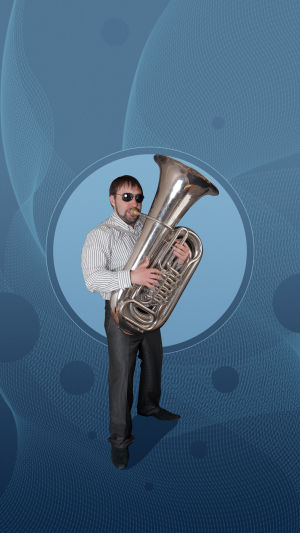Some of our common brass instruments are the trumpet, horn, trombone and tuba.
Today we will focus on the tuba.
The tuba is the largest bass brass instrument in the orchestra, with a thick, low, majestic tone.
The tuba comes in a variety of forms, including the aforementioned embouchure, circle and sousaphone, as well as the euphonium (tenor horn).
The tuba is also used in orchestras in G, F and C.
The tuba is mainly used for bass harmony or rhythm in the orchestra and is rarely used for solo performance.
In fact, the tuba is thick in the bas and has a beautiful high register. So modern composers occasionally use the tuba to play melodies, such as the theme of "The Cattle Drive" in Ravel's orchestration of "The Picture Fair", which is played on the tuba.
The tuba (or bass tuba) is a brass instrument with the lowest range of the wind and orchestra, invented in 1835 by the German Weipprecht.
The range of the tuba overlaps with that of the double bass in strings and belongs to the base of the brass section.
The tuba is rarely used as a solo instrument, but is basically used as an accompaniment instrument in an orchestra.
The tuba is a plunger instrument, flexible in its playing, but slurred and "gurgling" when playing scale phrases and arpeggios.
The break of the tuba is somewhat sluggish, but still clear, and stronger playing is better than weaker playing.
Since 1945 there has been a period of reappropriation and development of the performance of the tuba, with jazz musicians, avant-garde and popular music composers giving it a new character.
In the solo and tuba ensemble works they composed, the tuba became a more versatile and ingenious instrument than the traditional tuba.
Apart from the tuba, let us look at other tubular instruments.
The trumpet has a strong, sharp, brilliant tone, a loud, clear, high-pitched sound and a high degree of virtuosity and expressiveness.
it is the soprano instrument of the brass family, capable of playing both loud and clear horn sounds and beautiful, singing melodies.
The trumpet's use of a muted instrument adds a mystical dimension.
The trumpet has a clear, loud and very sharp tone. It is capable of playing not only rousing melodies but also lyrical and beautiful phrases.
It is therefore a common instrument in symphonic orchestras, wind bands, marching bands and large jazz ensembles.
The horn, also known as the French horn.
The horn has a soft, rich sound that blends well with the sound of woodwinds and strings.
In symphony orchestras, four horns are usually used.
For larger pieces, six or eight horns are used.
Although the horn is a brass instrument, it can be used for woodwind quintets, as it can produce not only the loud and clear sound of brass but also the soft sound of woodwind.
In general, brass instruments are loud and clear and have a high volume of sound.
This places great demands on the player, and if there are mistakes or flaws in the playing, they can easily be heard by the audience.
The brass is essential when an imposing atmosphere is required.
Many of the most popular scores are quickly remembered by the audience because of the powerful brass, and thus become familiar to them.





